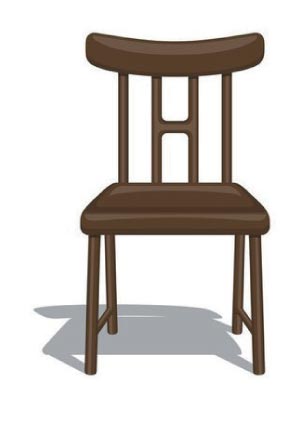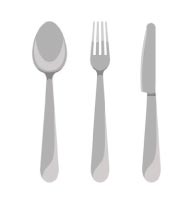

Home / Lessons / Level 1 / 9. Food
In this lesson, you will learn vocabulary words and dialogues related to food. You will see how to match words according to their animate and inanimate gender, and you will be able to ask questions such as «Are you hungry?» or «Does it taste good?».
In the wolastoqey language, nouns agree in singular and plural forms and according to their animate or inanimate gender.
| Singular | Plural | Animate (A) or Inanimate(I) | English |
|---|---|---|---|
Cikon  |
Cikoniyik  |
(A) | Apple |
Pocetes  |
Pocetesol  |
(I) | Potato |
Sumin  |
Suminok  |
(A) | Raisin |
Wisawaqsit  |
Wisawaqsicik  |
(A) | Carrot |
Masqosit  |
Masqositol  |
(I) | Bean |
| - Key concept - | |||||
|---|---|---|---|---|---|
| Plural animate | Plural inanimate | ||||
| -ok | -iyik | -icik | -ol | -uwol | -iyil |
Question: Kotuhp ?  / Are you hungry?
/ Are you hungry?
Answers: Aha, nkotuhp.  / Yes, I’m hungry.
/ Yes, I’m hungry.
Ontama, ma-te nkotuhpiw.  / No, I’m not hungry.
/ No, I’m not hungry.
Aha  |
Yes |
Nkotuhp  |
I am hungry |
Ontama  |
No |
Ma-te  |
Not |
Nkotuhpiw  |
Hungry (negative form) |
| Animate | Wolihpuksu / mocihpuksu  |
| Inanimate | Wolihpukot / mocihpukot  |
Question: Wolihpukot ?  / Does it tastes good? (I)
/ Does it tastes good? (I)
Answers: Aha, pocetes wolihpukot.  / Yes, the potato tastes good.
/ Yes, the potato tastes good.
Ontama, pocetes mocihpukot.  / No, the potato tastes bad.
/ No, the potato tastes bad.
Aha  |
Yes |
Ontama  |
No |
Pocetes  |
Potato |
Wolihpukot  |
Tastes good (I) |
Mocihpukot  |
Tastes bad (I) |
Question: Wolihpuksu ?  / Does it tastes good? (A)
/ Does it tastes good? (A)
Answers: Aha, sumin wolihpuksu.  / Yes, the grape tastes good.
/ Yes, the grape tastes good.
Ontama, sumin mocihpuksu.  / No, the grape tastes bad.
/ No, the grape tastes bad.
Aha  |
Yes |
Ontama  |
No |
Sumin  |
Raisin |
Wolihpuksu  |
Tastes good (A) |
Mocihpuksu  |
Tastes bad (A) |
| Animate / Inanimate | Singular | Plural | English |
|---|---|---|---|
| Animate foods | Cikon | Cikoniyik | Apple(s) |
| Sumin | Suminok | Grape(s) | |
| Wisawaqsit | Wisawaqsicik | Carrot(s) | |
| Sqoc | Sqociyik | Squash(es) | |
| Minsos | Minsosok | Raspberry(ies) | |
| Pskihqimins | Pskihqiminsok | Strawberry(ies) | |
| Molaqs | Molaqsok | Milk | |
| Opan | Opanok | Bread(s) | |
| Inanimate foods | Pocetes | Pocetesol | Potato(es) |
| Masqosit | Masqositol | Bean(s) | |
| Piyeskomon | Piyeskomonol | Corn | |
| Molaqsipom | Molaqsipomol | Butter | |
| Otuhkey | Otuhkeyol | Venison | |
| Musey Enahkahatey |
Museyol Enahkahateyol |
Moose meat |
 ‘pisun(ol)  ( ( ) )Medecine |
Micuwakon(ol)  ( ( ) )Food  |
|||
 Cikon(iyik)  ( ( ) )Apple(s) |
 Ti(wol)  Tea |
|||
 Minsoss(ok)  ( ( ) )Raspberry(ies) |
 Kahpe(wol)  Coffee |
|||
 Opan(ok)  ( ( ) )Bread(s) |
 Puhtay(ak)  ( ( ) )Bottle(s) |
|||
 Qotoput(iyil)  ( ( ) )Kutoput(iyil) Chair(s) |
 Tuwihput(iyil)  ( ( ) )Table(s) |
 Emqan(ok)  ( ( ) )Spoon(s) Mitsutiyey(al)  ( ( ) )Fork(s) Mihqotanis(ol)  ( ( ) )Knife(s) |
||
For each image, identify what is the word (in its singular form) by answering the question “Wen not?” or “Keq yut?”.
Attention: The animate or inanimate gender of the object influences the question that is asked. Make sure to put the answers in the correct column!
| Wen not ? | Keq yut ? |
|---|
Complete the dialogue by answering the questions of the first character.
Attention: The animate or inanimate gender of the object influences both the question asked and the response you will provide.




Complete the dialogue by asking the appropriate questions to the second character.
Attention: The animate or inanimate gender of the object influences the question you must ask.



Find the Wolastoqey words that correspond to each of the elements on the list.
How it works: Click on the first letter of the word, then on the last to validate a word.
Words can overlap and go in these directions: → ↘ ↓.
Additional information for exercises solutions may appear in the Appendix of the PDF document.